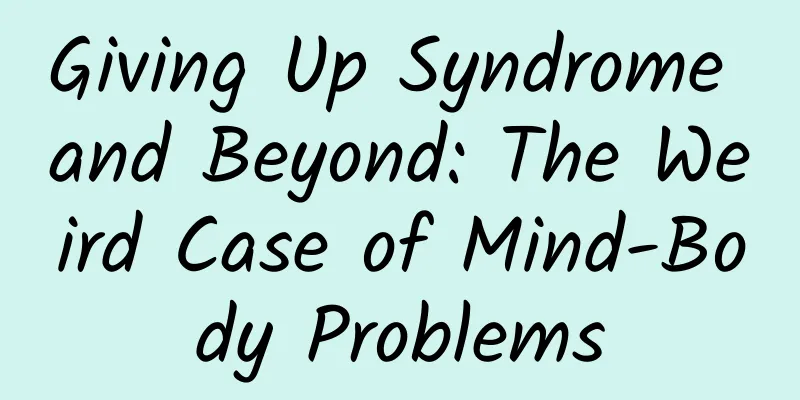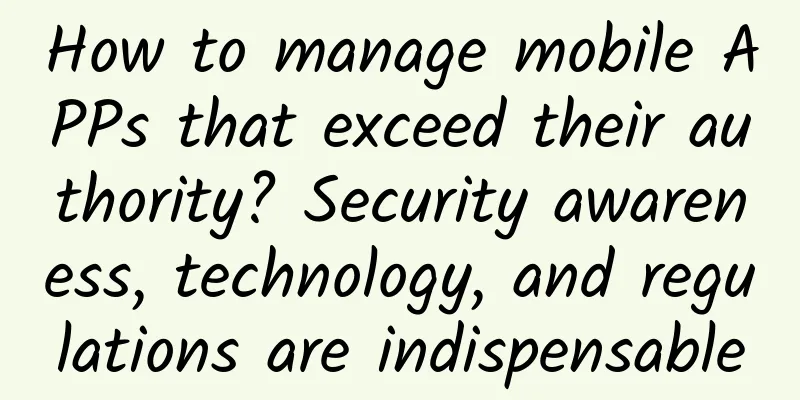Giving Up Syndrome and Beyond: The Weird Case of Mind-Body Problems

|
Leviathan Press: I was chatting with my mother a few days ago, and she mentioned an interesting phenomenon. It is normal to arrange a physical examination every year, but if you are a patient with high blood pressure, your blood pressure can be maintained at a stable level by relying on medication, but when you think about getting up early tomorrow to have a physical examination, your blood pressure will rise instead... This is perhaps a clear example of psychological causes leading to physiological changes. There are many reports of mass hysteria, or group psychogenic symptoms, and many of them cannot be detected from the perspective of modern medicine (for specific similar cases, please refer to the end of the article "Is Culture Bound Syndrome a Disease?"). As the article says, if illness in a broad sense is a social construction, then factors such as culture, religion, and community cannot be ignored. Our brains play the worst jokes on us. They always try to interpret and classify stimuli from the outside world, and sometimes perceive threats from the weakest information collected by the body and the environment. Occasionally, they will be overactive and cause the most serious diseases, such as hallucinations, epilepsy, paralysis, and coma, even if there is no physiological problem with the body. This is what Irish neurologist Suzanne O'Sullivan has been working on for years. Based in London, she treats patients with difficult conditions, such as epileptic seizures, who don't necessarily have epilepsy. Her mission is to debunk public misconceptions about psychosomatic illnesses. For example, people may think that psychosomatic illnesses are not serious, or that they are not illnesses at all, or that they are just fake. O'Sullivan takes us through some of the most chilling stories of people who suffer from dissociative disorders and are unable to take care of themselves. O’Sullivan is a gifted writer like Oliver Sacks, and her case studies reveal her empathy for her patients. In her new book, The Sleeping Beauties: And Other Stories of Mystery Illness, O’Sullivan travels around the world investigating a range of strange and fascinating illnesses that are, more importantly, highly contagious. In Sweden, a girl developed listlessness, and hundreds of other children fell into similar comas. In Nicaragua, a teenager saw a terrifying little man in a hat, and dozens of other children at school began seeing the same ghostly figure. Dozens of American diplomats stationed in embassies around the world claimed that they had experienced similar symptoms, such as headaches, fatigue and memory loss, but there was no evidence that they were physically ill. O'Sullivan says psychosomatic illnesses are more common than we think, but few people admit they have them. In fact, she explains, "You make your life worse by not accepting the diagnosis, and then you go to doctors and do tests and try to get another diagnosis, even if it's not what's wrong with them. As a result, your life becomes a mess." I caught up with O'Sullivan at her home in London to discuss these mysterious illnesses and the problems of medical diagnosis. Mind and body. "We shouldn't separate the mind from the body. Our minds and bodies are connected," said Susannah O'Sullivan. The phenomenon of children sleeping is not just physical. "As you can see, these children have lost their ability to take care of themselves." © BBC You mentioned a strange disease in Sweden where hundreds of children were in comas and bedridden. What did you find when you visited these girls? I visited two little girls, one 10 and one 11 years old. The 10-year-old had been in this strange coma for a year and a half, and her sister had been in this coma for six months. It was shocking. When we walked into the sister's room, she was completely unresponsive. Although she looked healthy, when her father tried to lift her up, she was as limp as a rag doll. No matter what happened, she would not open her eyes, and she had been like this for the past year and a half. Her parents fed her liquid food through a straw to keep her alive. This is called "resignation syndrome." When it first started, people thought it was just apathy, because they were slowly losing interest in the world and becoming completely unable to communicate. This has been happening in Sweden since the early 2000s and it continues to happen today. The most amazing thing is that these aren't just any kids. They're from families seeking asylum in Sweden, and when they're facing the prospect of being deported from Sweden, they start to have the syndrome. Many of them are from former Soviet republics or from particularly hard-pressed communities, like the Yazidi, who may have come to Sweden to escape something terrible in their homeland. But the two kids I met came to Sweden when they were two, and are now 10 and 11, so it must have something to do with their lives in Sweden. © BBC You also met the doctor who had been treating them. What did the doctor say? When I spoke to my doctor, I wanted to talk about the apparent connection between the children’s loss of hope and their symptoms, but she wasn’t keen on discussing the subject. Instead, she wanted me, a neurologist, to speculate about what was going on in the children’s brains. I thought it was an interesting conversation, of course, and it taught us a lot about motivation and consciousness, but it didn’t get to the heart of the matter. The children were the way they were because they were at risk of deportation. Why do these children fall into a coma and become bedridden? I would like to first distinguish the meaning of disease and illness. When we talk about disease, it refers to a specific, objective illness, not our view of our body. Illness, on the other hand, refers to our feeling of being sick, which is influenced by the expectations in our brain. Now imagine yourself in one of these asylum-seeking children, and we all know that when a person is facing deportation, they may lose hope in life. How do we react when we start to feel these physical changes? From a disease perspective, our bodies are affected by our subjective thoughts. Think about what happens if you are deported. First you feel a little sick, then you feel like you can't get out of bed, and then you close your eyes. It's not unusual for people to experience physical symptoms when they are thinking, experiencing things, and being stressed. What is unusual about these children is that their situation is extreme. The other unusual thing was that it wasn't just one or two children who had the disease, it was hundreds of them. It was like an epidemic that was sweeping through the families that had settled in Sweden. Again, is this unusual? To some extent, illness in general is a social construct. If there is a local folklore that certain stimuli will cause certain symptoms in the body, and you believe it, then it is very easy for those stimuli to break down and cause the same symptoms in your body. We should not separate the body from the mind. Our mind and body are connected, and as you can see, these children have lost their ability to take care of themselves. One of the things that comes up a lot in your case studies, both in Sweden and elsewhere, is that people don't like to hear that they have a psychosomatic illness. Similarly, among your patients, when someone has a seizure, they think they have epilepsy, but you think a large proportion of them are actually psychosomatic. At least a quarter of my patients who tell me they have epilepsy and they have frequent seizures are purely psychosomatic. It's a very common way that the body responds to some kind of stress. It usually starts with a physical condition, like fainting. For example, a young person gets on a crowded train and it's very hot and people faint, which is normal. But it plants a seed of fear in the person's mind, and the next time he gets on the train, he thinks, "I hope I won't faint this time." And then he starts to check himself unnaturally, which leads to an increase in symptoms and eventually an illness. You've investigated other psychosomatic illnesses that are also contagious. What happened to the Miskito people in Nicaragua who were going into trances and having terrible hallucinations? It's an interesting disease called grisi siknis (Miskito for crazy sickness, sometimes translated as hysteria). Some symptoms and medical diagnoses are only found in certain cultures. Grisi siknis is found only in the Miskito tribe of Nicaragua, who live on the Miskito Coast. It affects teenagers, especially schoolgirls. Sufferers behave like crazy, they run around frantically, then fall to the ground and have seizures. Family members say it's so strong it takes several grown men to catch a girl. It comes in waves among the Miskito community. If one student gets sick, the whole school gets infected. © RTD DocumentaryHow do the Miskito view this phenomenon? They believed that the person suffering from the disease was haunted by a spirit called a duende. The patient often saw the ghost, a small man wearing a hat. They believed that this ghost haunted the patient and caused the disease. This condition often occurred in young women who were sexually threatened and often received unwanted attention from older men. How do the Miskito people deal with grisi siknis? They treat it with traditional rituals. Local healers would pour herbs over the child. Surprisingly, this method worked. It is important to understand that this is a complex social mechanism that locals use to deal with specific social issues. In a conservative society, girls are under some kind of pressure to present grisi sikni, and it is their way of expressing their pain and asking for help without having to have an awkward conversation or explaining what the exact problem is. © RTD DocumentarySo, performing this ritual that sounds like an exorcism is more effective than going to the hospital to see a doctor? It is. I think we need to think about what we can learn from these people. In the United States and the United Kingdom, if someone has the same seizure, they go to the hospital and get a brain scan and all kinds of tests, but the cure rate is only 30%. The Miskito cure rate is 100%. This is not to say that we should all start to accept religious rituals and use traditional healing methods. We should ask ourselves: What is this illness trying to tell us? When a Miskito child gets sick, the entire community comes together to help the sick, whereas we isolate those who are sick. We can learn from this more compassionate, community-based response. In Kazakhstan, you also investigated a completely different kind of psychosomatic illness. What did you find? This amazing journey took place in two small towns in central Kazakhstan, Kalachi and Krasnogorsk. It all started in 2011 when a middle-aged woman was setting up a stall and suddenly fell asleep. The people at other stalls had no way to wake her up. She was taken to a good hospital and all the test results were normal. No one could explain what happened. A week later, she woke up on her own and was back to normal. But unfortunately, the phenomenon spread. Over the next few years, 133 people fell into mysterious sleep, and some experienced various other symptoms, such as hallucinations. The Kazakh government took it very seriously and tried to find the cause. They took hair samples, air samples, and water samples, hoping to find poison or anything else that could explain it all. There's a mine nearby, so it's possible they were poisoned. It was a mining town, and these people lived and worked in the uranium mine for years and never got sick. The mine had been closed since the 1990s, and it was 20 years before they got sick. It's not that they shouldn't have investigated whether the mine was toxic, but the tests were very detailed and they found nothing. What do you think? When I first saw the pictures of this town, I thought it was very poor. The whole town was in ruins, the buildings were falling apart, and people had no jobs. I initially assumed, as many doctors do, that these people were suffering from stress-induced schizophrenia and were in a coma. But when I got there, I found something completely different. These people were transported to this secret uranium mine in the 1970s, and they called it paradise, which I couldn't understand at first. But as I listened to their stories, I realized that this was indeed a paradise in central Kazakhstan. It was taken care of by Moscow, had cinemas and a big hospital, and the shops were full of goods that were not available anywhere else in Kazakhstan. But then everything changed. The mines closed, and their lives went from being very privileged to being very difficult. It's not uncommon for people to experience physical symptoms in response to events and stress. Karachi in central Kazakhstan. © RT Since the collapse of the Soviet Union, the Russians no longer support these towns in Kazakhstan. The uranium mine closed, and the town lost its protection. But the people didn't get sick. You would have thought that people would get sick from stress, but they survived these difficult times. The problem came around 2010, when the government closed a lot of entertainment venues, and people's lives became less fun. There were only 300 people left in the town, and they lived in very poor conditions. So the government wanted to move them to a bigger town, but people didn't want to move. As they told me this story, I realized it wasn't because life was difficult, it was because people didn't want to leave their town. It was like a love story. The town had been a great help and comfort to them, and they were willing to wait until it could be revitalized, but they also realized that day would never come. Sleeping sickness was a complex problem-solving tool. After leaving the town and resettling, these people recovered. They didn't choose to leave the town, the sickness made the choice for them. These patients believed they were being poisoned by uranium and did not want to hear this psychosomatic diagnosis. The locals still believe this. Research has not found any poisonous substances, but to this day, people still believe that they were poisoned and that is why they left the town. This is understandable. In people's minds, people with psychosomatic diseases are weak, or either crazy or liars. In this case, who would admit that they have such a disease? © Mysterious FactsWhen you talk to people who have had sleeping sickness, I think you said they were not poisoned. It must be difficult for you to communicate. I've learned something from them about this. I believed in a Western medical view that if I could explain to people what was happening to them physically and why it was a psychosomatic disease, they would believe me and be relieved. But it was the exact opposite. People here only believed their own explanations. When you tried to bring up the topic of psychosomatic disease, no matter how gently you tried, they didn't want to hear it. Now I understand that maybe sometimes not bringing it up is the right thing to do. If psychosomatic disease itself is just about solving real problems, then maybe it's unwise to try to bring it to the public. It is not the response of a Western neurologist to ask people to believe a wrong diagnosis. I don't encourage people to believe in a diagnosis that I don't believe in myself, but I try to listen to what others say so that I can understand what the problem is. Western doctors often argue with their patients. I say, it's a psychosomatic disease, and the patient says, "No, it's not." This kind of argument is pointless and neither side gets what they want. For me, it is reasonable to explain psychosomatic diseases to patients, but at the same time I also listen more to their own stories. Sometimes psychosomatic diseases are a specific narrative with a beginning, middle and end. I need to understand how people think about their own phenomena. Obviously, there are limits to reasonableness. So far, we've been talking about cases of people who have lost their homes or who believe in spirit possession. But you also write about American diplomats in Cuba experiencing a range of symptoms, such as dizziness, headaches, memory problems, fatigue, and so on, known as the "Havana Syndrome." There have been many reports that the enemy must have used secret weapons against American diplomats in the embassy. But you don't think so, do you? It's not just that I don't believe it, these reports are biologically impossible and are just anecdotal, like believing you are possessed by a ghost. The hypothesis of a sonic weapon attack is not convincing. In December 2016, an American diplomat stationed in Cuba heard a strange sound and had a series of strange symptoms, including headaches, dizziness, unsteadiness, and difficulty concentrating. So there were rumors that the embassy staff had been attacked by sonic weapons. © Breezy Scroll It could also be some kind of microwave energy weapon. Well, it's interesting how this whole thing unfolded. First people thought it was a sonic weapon because some people heard voices. Then other people said they got sick after hearing the voices. But there was a medical problem - sound doesn't damage the brain. Very loud sounds can damage hearing through the ear, but they don't damage the brain. The scientists had to accept that, and they said, "Maybe it's not a sonic weapon in the hearing range. Maybe it's something beyond the hearing range, like a microwave weapon." Here's another problem. The assumption that there are sonic weapons is that people hear sounds, so the assumption that there are microwave weapons now is illogical, because people can't hear microwave weapons. And there are many biological reasons why microwave weapons are impossible - they don't exist. I'm not a weapons expert, but I'm a doctor of medicine, and I know that if a person was attacked by a microwave weapon, it must be targeting more than just the brain. If a microwave energy is shot directly at a person from a long distance, it can't just damage the brain. Why don't they have vascular problems in their kidneys, hearts, and lungs? It's biologically impossible. But the microwave weapon theory persists and is still reported in the media. It's not just that I don't believe it, these reports are simply not biologically possible and are nothing more than hearsay. The US government sent some of its top doctors to investigate, and they believed that some secret weapon might be causing the symptoms. Yes, the gap between what was reported in the media and what was in the report itself is quite interesting. Steve, have you read the report? No. This is our main problem. I read the report, and most people don't. The report says that the symptoms of the people who were examined were so varied that they couldn't even be sure that these people were experiencing the same thing. Finally, they ruled out a large portion of the people who reported being affected by this attack and focused on a smaller number of people. Then they ruled out psychosomatic illness as an explanation, and didn't say why. Then they gave a lot of psychosomatic diagnoses, but covered them up with euphemisms. For example, they would use the word "functional" but put it in parentheses and say "functional, not psychiatric," which is a doctor's euphemism for giving a psychosomatic diagnosis. They did mention that it was believed to be microwave energy, but when you read the entire report, you'd be surprised at how little evidence there was for this. They hadn't even met the person involved. So what do you think happened to American diplomats in Cuba? We don't know what happened to the first person because in this situation, the illness that the first person gets may be completely different from the others. But he will set the tone for what will happen next. When you understand what the embassy staff went through, it can be scary. They were told that there was a possibility of being attacked by sonic weapons, so if they heard strange noises again, they had to hide behind the wall. They also had to attend meetings and check their bodies constantly, and see a doctor if they had any symptoms. When people are asked to check their bodies, the anxiety will continue to escalate. This comes after 50 years of tension between the United States and Cuba. The U.S. Embassy in Cuba had just opened during the Obama administration, and there were concerns that the Cubans would install eavesdropping equipment in the building, and they had good reason to be nervous. These people had reason to believe they were under threat because there were precedents of ambassadors to Cuba and Russia being wiretapped. And they were told that an attack could happen at any time and to check their bodies. Imagine what happens when you check your body to see if there is anything wrong? You will actually find out that there is something wrong with you. If someone says to you, "You have an infection or an attack, check your body," you will immediately notice all these tingling and discomfort that you would not notice normally. But the phenomenon is not limited to Cuba. Diplomats at U.S. embassies in China and Germany have also reported similar symptoms. Now the phenomenon has spread around the world, with cases in London and Germany. But this is the characteristic of contagious symptoms. It is also worth noting how the diplomats in Cuba learned that they might have a psychosomatic disease. The doctors involved in the incident said that these diplomats were not acting or pretending to be sick. They did not want to get sick. Now, if this is your view of psychosomatic illness, you are essentially saying to your patient, "Well, here are your choices, you are either faking, you are crazy, you want to be sick, or you are being attacked by a sonic weapon." Which explanation do you choose? The answer is obvious. By Steve Paulson Translated by Rachel Proofreading/boomchacha Original article/nautil.us/issue/107/the-edge/the-neurologist-who-diagnoses-psychosomatics This article is based on the Creative Commons License (BY-NC) and is published by Rachel on Leviathan The article only reflects the author's views and does not necessarily represent the position of Leviathan |
>>: It took several weeks to remove the parasite from the patient's body.
Recommend
If the APP is renamed well, there will be no loss of users!
1. Why did the App product change its name? For m...
African mercenaries earn 1,000 yuan a day by sending blessings to Chinese people. They wish you a happy birthday with guns in hand...
8,000 kilometers away from China and with a 5-hou...
How to optimize information flow advertising accounts?
As we all know, information flow advertising is t...
5 Examples of SaaS Product Growth
This compiled article mainly introduces the low-c...
On the second day of the first lunar month, welcome the son-in-law and bring good fortune. Do these 5 things and your home will be filled with joy!
The second day of the first lunar month is the da...
Analysis and application of commonly used brushes in Photoshop
Analysis and application of commonly used brushes...
Shen Liang's internal training video tutorial on futures starting point trading system (only talk about the dry goods and no nonsense)
Chen Liang's Start-up Point Trading System Fu...
Retention rate? Several classic methods to keep more users!
An APP and its users will go through four stages:...
A guide to promoting large-scale events!
Be a long-termist and try to maximize the experie...
Support fingerprint unlocking, perfect combination of Email Master and iOS8
Just touch the Home button of your Apple phone wi...
What does it mean when Tik Tok creates content that violates regulations? Introduction to the types of illegal content created on Tik Tok
If Douyin users want to achieve the effect of att...
Can the unused electricity be stored?
This summer, Sichuan has been experiencing contin...
Coughing is urgent! A complete guide to whooping cough
Author: Chen Zhou, attending physician at Shangha...
Summary of the 6th offline open class of Mobile Developer Service Alliance (MDSA): Best Practices for Mobile Business-Level Operation and Maintenance
On August 29 , under the clear sky of parade blue...
Review of the new toy for geeks: Baofeng Magic Mirror 3 plus
At this year's E3 exhibition, Microsoft's...









